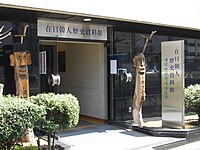There are various names of Korea in use today that are all derived from those of ancient Koreanic kingdoms and dynasties. The choice of name often depends on the language, whether the user is referring to either or both modern Korean countries, and even the user's political views on the Korean conflict.

The Ryukyuan languages, also Lewchewan or Luchuan, are the indigenous languages of the Ryukyu Islands, the southernmost part of the Japanese archipelago. Along with the Japanese language and the Hachijō language, they make up the Japonic language family.
Koreans in Japan comprise ethnic Koreans who have permanent residency status in Japan or who have become Japanese citizens, and whose immigration to Japan originated before 1945, or who are descendants of those immigrants. They are a group distinct from South Korean nationals who have immigrated to Japan after the end of World War II and the division of Korea.
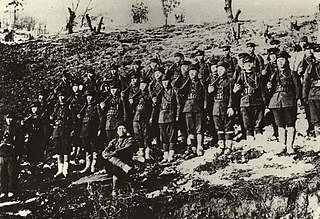
The Battle of Qingshanli was fought over six days in October 1920 between the Imperial Japanese Army and Korean armed groups in a densely wooded region of eastern Manchuria called Qīngshānlǐ. It occurred during the campaign of the Japanese army in Jiandao, during the Japanese rule of Korea (1910–1945).
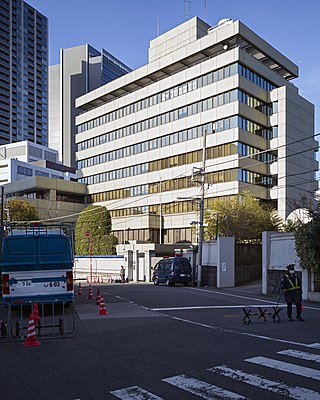
The General Association of Korean Residents in Japan, abbreviated as Chongryon or Chōsen Sōren, is one of two main organisations for Zainichi Koreans, the other being Mindan. It has close ties to North Korea and functions as North Korea's de facto embassy in Japan, as there are no diplomatic relations between the two countries. The organisation is headquartered in Chiyoda, Tokyo, and there are prefectural and regional head offices and branches throughout Japan.

Yakiniku, meaning "grilled meat", is a Japanese term that, in its broadest sense, refers to grilled meat cuisine.

Mindan, or the Korean Residents Union in Japan, is one of two main organizations for Koreans living in Japan, the other being Chongryon. Mindan has ties to South Korea and was established in 1946 in Tokyo, Japan. Currently, among the 610,000 Korean residents in Japan who have not become naturalized Japanese citizens, 65% are members of Mindan, and another 25% are members of Chongryon.
Lee Hoesung is a Zainichi Korean novelist in Japan. He writes under the pen name Ri Kaisei, the Japanese reading of his Korean name. In 1972, he became the first ethnic Korean to win the Akutagawa Prize for his story "The Woman Who Fulled Clothes". Other representative works of his include Mihatenu Yume and Hyakunen no tabibitotachi.
Vietnamese people in Japan form Japan's second-largest community of foreign residents ahead of Koreans in Japan and behind Chinese in Japan, according to the statistics of the Ministry of Justice. By in December 2023, there were 565,026 residents. The majority of the Vietnamese legal residents live in the Kantō region and Keihanshin area.
The Chinese Korean language is the variety of the Korean language spoken by Koreans in China who have Chinese nationality, primarily located in Heilongjiang, Jilin, and Liaoning.
Seong Son-im, known mononymously as Sonim, is a Japanese-born Korean actress and singer associated with Amuse Inc. She debuted in 2000 as the lead singer of the pop duo EE Jump. In 2002, she debuted as a solo singer with "Curry Rice no Onna", which then led to the release of her debut album, Hana, in 2004.

Zaitokukai, full name Zainichi Tokken o Yurusanai Shimin no Kai, is an ultra-nationalist and far-right extremist political organization in Japan, which calls for an end to state welfare and alleged privileges afforded to Zainichi Koreans. It has been described by the National Police Agency as a potential threat to public order due to its "extreme nationalist and xenophobic" ideology.
There is a population of Burmese people in Japan. In December 2023, there were 86,546 Burmese living in Japan.
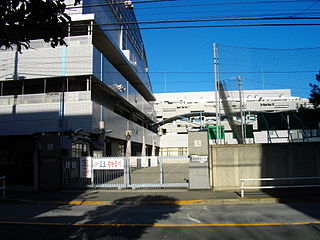
Tokyo Korean School is a Korean school located in Wakamatsu-cho, Shinjuku-ku, Tokyo, Japan; catering to the Korean expatriate community and to Japanese-Koreans living in and around Tokyo. It was founded in 1954. It is affiliated with the South Korean government and Mindan (민단). It includes an elementary school, a middle school and a high school. The total population of the school is some 1,100 students. The primary language of instruction at the school is Korean; but there is an English language department and English library at the school. Japanese is also taught as a second language at the school. Educational essentialism is the main educational philosophy of teachers in both the Korean and English departments at the school.
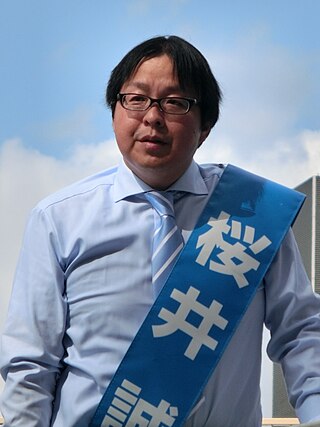
Makoto Sakurai is the pen name of a political activist, blogger, and writer from Kitakyushu in Fukuoka Prefecture, Japan. A former civil servant in a ward office, he is the founder and former leader of the far-right nationalist group Zaitokukai, known for its anti-foreign messages and public demonstrations which some consider unruly. Following his unsuccessful campaign in the 2016 Tokyo gubernatorial election, he founded the Japan First Party in August 2016 and is currently the party's leader.
Katsumi Satō was a Japanese human rights activist, editor, and critic.
Mizuho Katayama is a synchronized swimming coach in Japan. Born to a Korean family in Japan, she participated in Japanese domestic synchronized swimming competitions under the name Mizuho Kōchi, and represented South Korea in international competitions under the name Kim Mijinsu, most notably in the women's solo and women's duet competitions at the 1988 Summer Olympics. After her retirement from the South Korean national team, she married and began using her current name.
Yilan Creole Japanese is a Japanese-based creole of Taiwan. It arose in the 1930s and 1940s, with contact between Japanese colonists and the native Atayal people of southern Yilan County, Taiwan. The vocabulary of a speaker born in 1974 was 70% Japanese and 30% Atayal, but the grammar of the creole does not closely resemble either of the source languages.
Masatoshi Muto is a Japanese diplomatic analyst and former diplomat who served as the Japanese ambassador to South Korea from 2010 to 2012. He also served as the Japanese ambassador to Kuwait in the late 2000s and was the Japanese consul-general in Hawaii in the early 2000s. Starting in 2015, he is also an author.
The Huáyí yìyǔ refers to a series of vocabularies produced by Ming and Qing dynasty Chinese administration for the study of foreign languages. They are a precious source of phonological information, both for the study of Chinese pronunciation and for the study of the languages in question.
